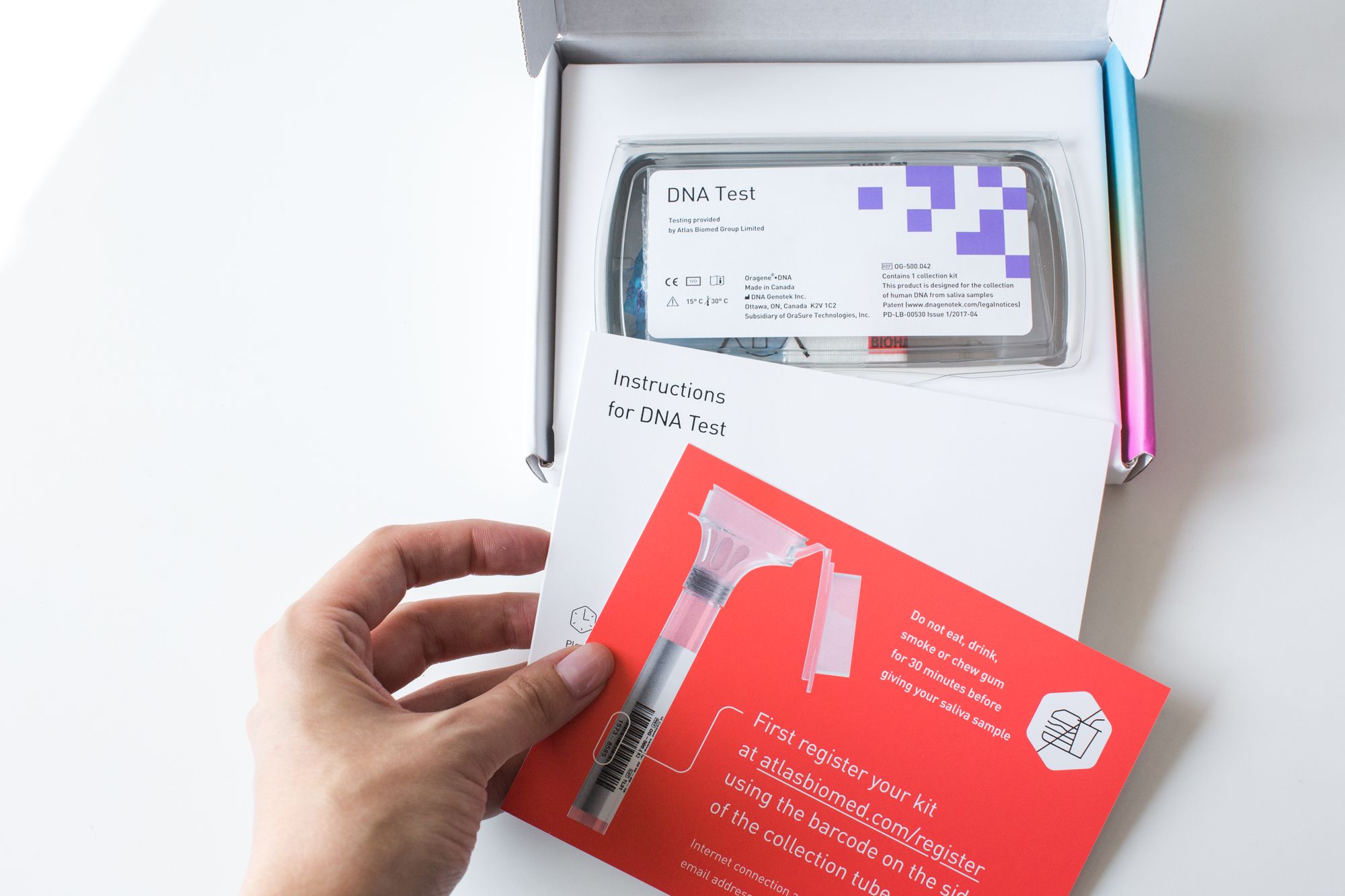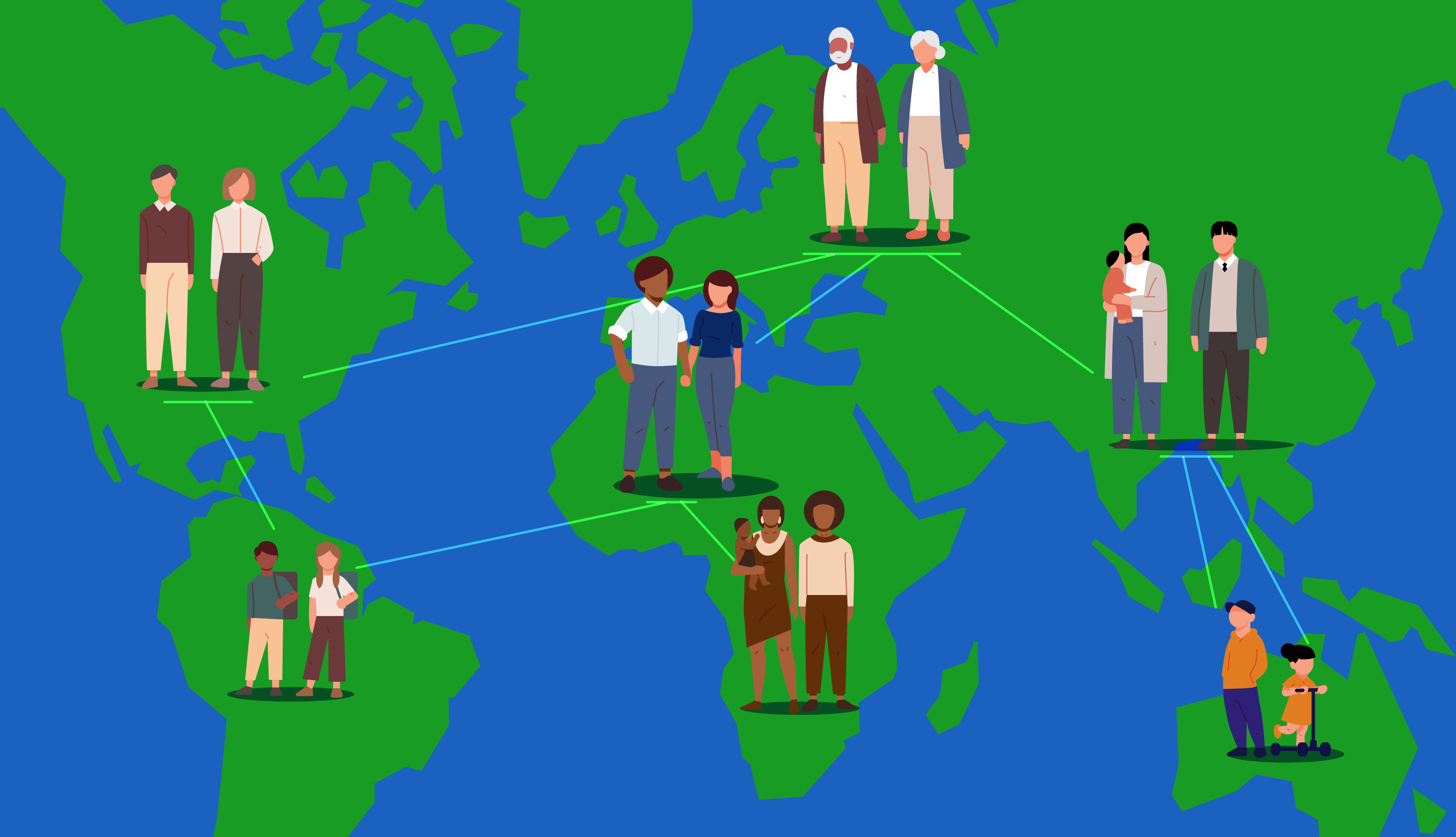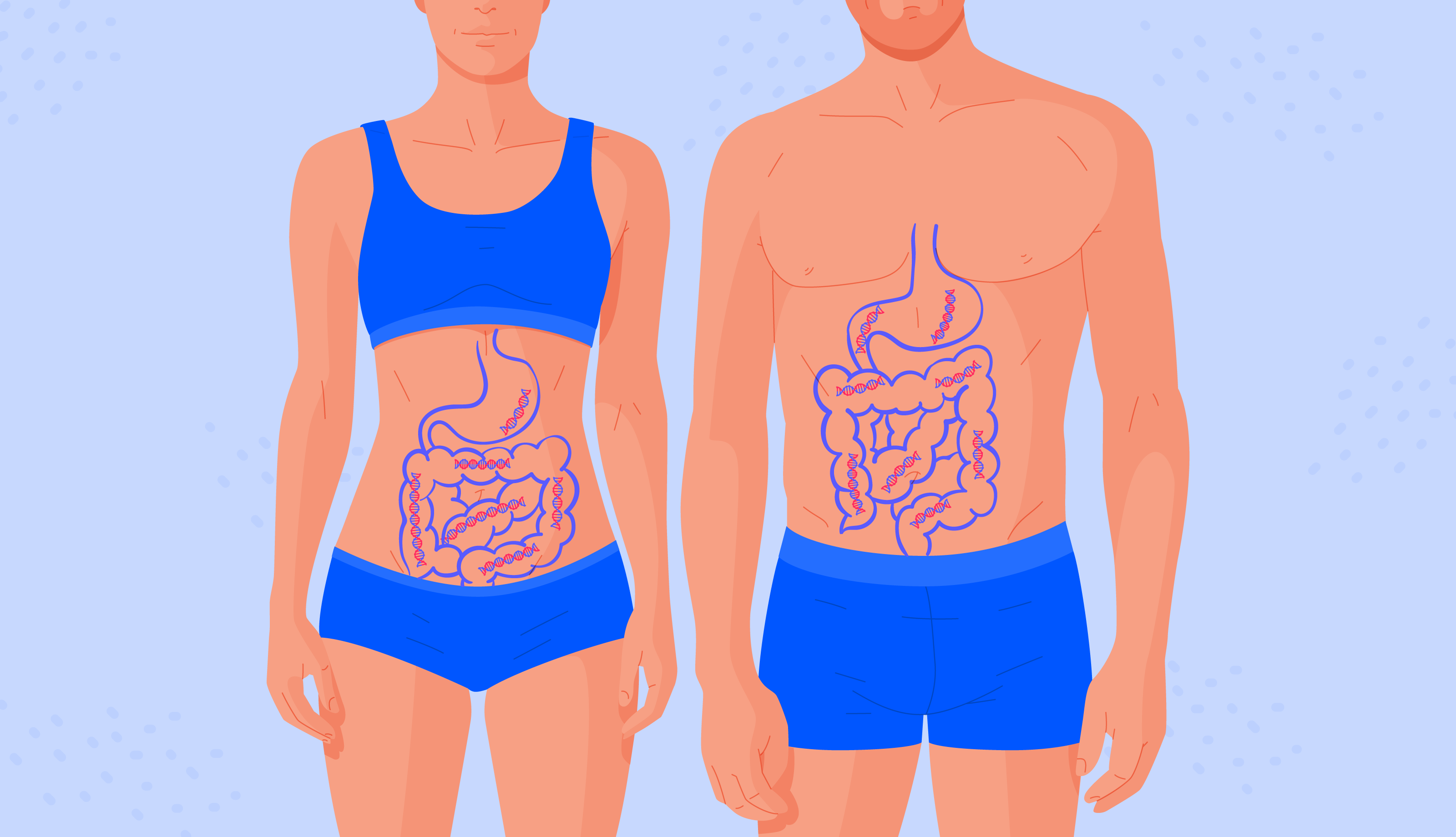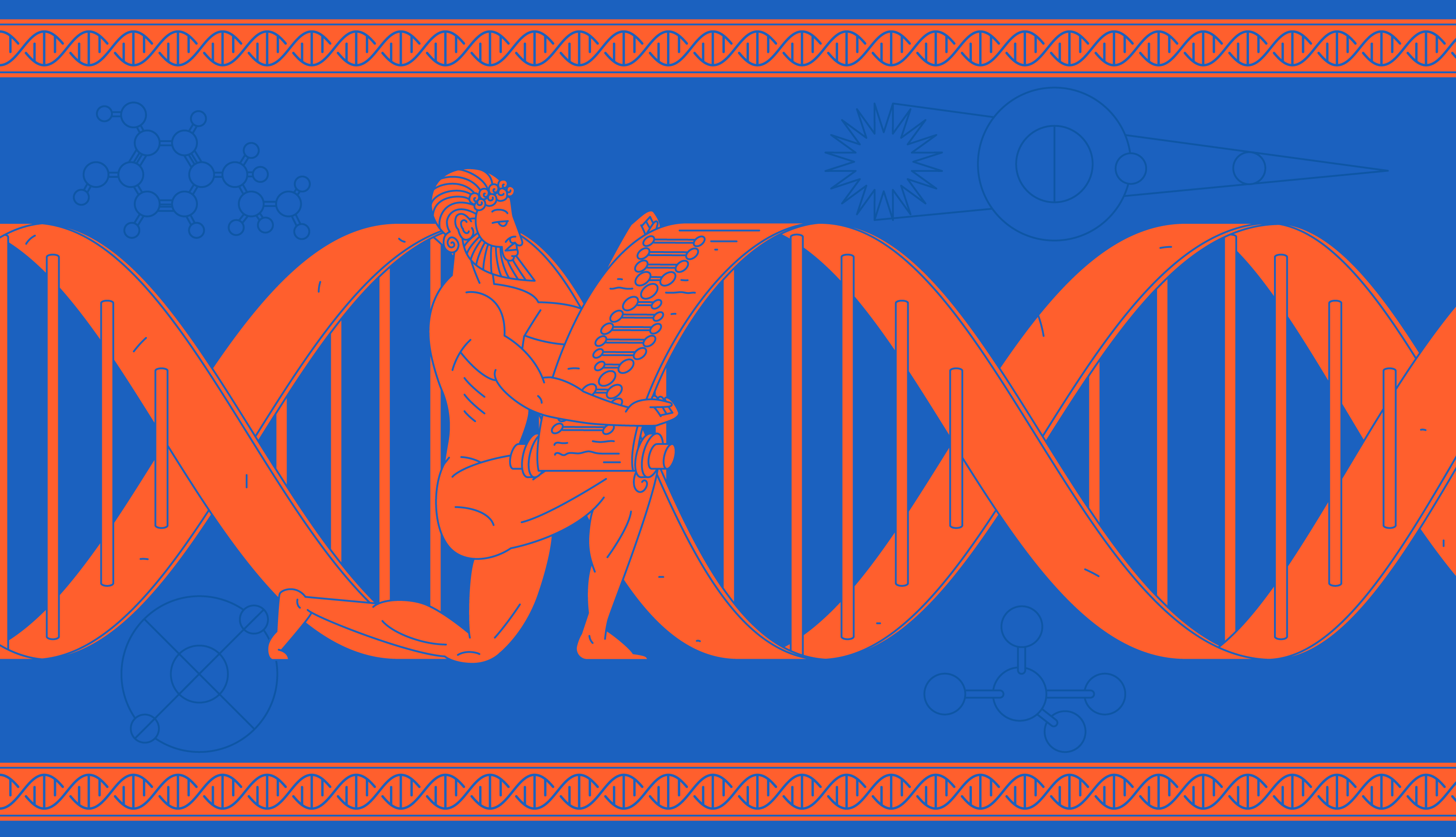Here’s what you need to know about genetics and genealogy, ethnicity and DNA.
One of the most popular reasons people take the Atlas DNA Test is to find out about their ethnicity and DNA. In this article, we will tell you about haplogroups, ethnic phenotypes, and ethnic genes.
Before you jump at the chance for a free ethnicity test online that will tell you all about your ethnicity and DNA, let’s have a look at what you’re getting yourself into, and what you can learn from analysing your genetic material in our guide to DNA genealogy for dummies.
Table of contents
- 1. Genetic genealogy analysis: haplogroups
- 2. Alleles and ethnic phenotypes
- 3. Genetic genealogy: migrations and climate
- 4. Health and the genetic genealogy
- 5. How genetic genealogy testing works
- 6.The difference between ethnicity and DNA
- 7. Are free ethnicity estimate tests reliable?
Genetic genealogy analysis: haplogroups
Most genetic information is inherited from both parents, but some parts of it come only from the mother or father.
- Boys’ DNA has information about the mother’s and the father’s lineage.
- Girls’ DNA only has information about the mother’s lineage.
Why? There are 23 chromosome pairs in your genome. The 23rd pair in girls is XX chromosomes, and in boys — XY. There are no maternal genes in the Y-chromosome, meaning that it is transferred only through the paternal line.
During DNA replication, random changes in a gene can happen, e.g., single nucleotide variations (SNV). Mitochondrial DNA (mtDNA) is passed from mother to her children but boys cannot pass it on to their children.
Scientists discovered that some DNA changes are shared by specific groups of people and have been passed down through generations. By tracking these genetic variants, it is possible to go back in time and see what “tribes” your ancient ancestors belonged to. We call these genetic “tribes” haplogroups.
Alleles and ethnic phenotypes
Alleles are different variants of a gene that are located in the same place on a chromosome. Phenotype is a word used to describe a person’s physical characteristics, like eye and hair colour or blood type. A phenotype is made up of a specific combination of alleles.
For example, more than twenty different genes help determine hair colour, and in each person, these genes may have a unique combination of alleles. So even if the end result is black hair, not all black hair is the same. Here, we specifically chose the example of black hair because it is the most common hair colour in the worldwide population.
Genetic genealogy: migrations and climate

Genetic genealogists look at other changes in the Y-chromosome and mtDNA to find the person’s haplogroup. Some haplogroups are rare, like isolated tribes on remote islands who didn’t mix with other humans. Other haplogroups are widespread.
Researchers have deduced that very ancient migrations influence how rare or widespread haplogroups are. For example, during the Ice Age, much of the water was frozen and it allowed groups of people to migrate out of Africa to Asia. But when the ice melted, some of these groups became isolated on islands - after that, some had very little contact with other tribes.
On the other hand, when the Ice Age receded, it opened up new places for humans to settle. Indeed, Europe was only colonised by humans after the continent warmed up. This is why researchers believe that changes in climate, heat, and UV exposure influenced the physical appearance of humans as their DNA adapted to new surroundings.
Health and the genetic genealogist
There are dozens of paternal Y-haplogroups and maternal mitochondrial DNA haplogroups. In addition, haplogroups are subdivided into subclades, based on specific sets of genetic variants (haplotypes) shared by these subgroups.
For example, people naturally associate red hair with Irish ancestry, and for good reason. There are a lot more redheads in Ireland - and North/Northwestern Europe - than elsewhere. But the genetic variation of the MC1R gene that plays a role in red hair is also associated with increased risk of melanoma (a serious type of skin cancer).
If you check an ancestry white paper about genealogy analysis, you will notice that there are some relationships with health, which can mean that some populations are more susceptible to specific diseases than others.
For example, one study with 400 participants demonstrated that ischemic cardiopathy is more common in the Spanish population with maternal haplogroup H than others. Haplogroup J, on the contrary, seemed to play a protective role against it.
A British study, this time of 3,200 people, showed that coronary heart disease was more common in patrilineal haplogroup I carriers. However, this area of research is still very new and requires many more studies before it can be considered a reliable and valid method for evaluating health risks.
☝️TIP☝️ Discover your unique genetic predisposition to health risks with the Atlas DNA Test.
How genetic genealogy testing works

Twenty years ago, ordering a DNA test to your door would have been inconceivable. Nowadays it’s commonplace - that’s because the technology is much better, which has made it an affordable service.
For you, the user, it’s actually very simple. Let us walk you through how we do it at Atlas Biomed. Obviously, first and foremost, you need to purchase a test. When it’s delivered, you’ll find a collection kit inside, which is basically a tube with a funnel top for you to spit in (up to the line).
When you send your sample back, it goes to a laboratory equipped with a DNA genotyping machine (we use Illumina, a world-class producer of such tech). Here, your DNA is amplified and tested on a DNA microarray, which is a chip containing hundreds of thousands of data points.
This information is then interpreted by an algorithm that can identify what haplogroups you belong to. We also use this information to check for hereditary diseases and many other traits, but some companies only offer genetic ancestry testing.
The difference between ethnicity and DNA

Imagine you sign up for DNA analysis genealogy based on the marketing campaign that says, “Discover your ancestor’s nationality”, or “Free ethnicity estimate”. Well, this is a red flag. Nationality is a very vague definition. Countries cease to exist - they expand and shrink and their boundaries are constantly changing shape.
Characteristics of different ethnicities are not determined by man-made boundaries, nor can they be reduced to just “ethnic genes” because ethnicity is largely influenced by culture and environment. What really distinguishes people are where you grow up, local tradition, and religion.
There are many examples like this, which is why scientists prefer to use the term “population”, which is also much less politically charged than the word ethnicity. In genetic ancestry, populations are groups that existed for a long time. Inside any population, people met, married, and shared genetic traits with the next generation.
Ethnicity or population?
| Ethnicity | Population |
|---|---|
| A group that a person considers themselves a member of, but whose ancestors may have come from other groups. | A group determined by the person’s ancestry, although the person might refer themselves to a different group. |
| Most marriages occur with members of other groups. | Over 50% of marriages are made within the group. |
| Ethnicity can include many populations. | A population can be a big group, e.g., the entire humanity, depending on the scale of analysis. |
Are ethnicity estimates free reliable tests?

Genetic genealogy testing is not an easy process, and it certainly can’t be done for free or without a sample of your DNA. Any free service that requires you to fill in some information online will not yield any remotely accurate result, because that information is in your genes.
There is another option though if you really want a free ethnicity test or an ethnicity makeup test. You could build a family tree, and you can even do that for free. Start with recording the names and dates of birth of your siblings and parents. Then go back further; ask your relatives and find out about your aunts, uncles, grandparents, and great grandparents.
However, no matter what, please don’t try any service offering an ethnicity estimate with photo. That’s about as reliable as your horoscope. Remember, photos are the product of cameras and their lenses, which are influenced by lighting, angles, and surroundings. In addition, ask yourself where they are getting the data to support this result!
As a DNA testing company, we are passionate about protecting people’s personal information, especially their genetic data. Other types of DNA testing for genealogy (that are not held to such high standards) may use your personal information and your photo for other purposes, so please, always read the fine print before getting into genealogy, genetic or otherwise.
- The Lancet, Fadi J Charchar, et al, Inheritance of coronary artery disease in men: an analysis of the role of the Y chromosome, 2012
- Cardiac Biomarkers Group, Research Unit, INIBIC-Complejo Hospitalario Universitario A Coruña, A Coruña, Spain, Mitochondrial Haplogroups H and J: Risk and Protective Factors for Ischemic Cardiomyopathy, 2012
- U.S. National Library of Medicine, Is hair color determined by genetics?




















